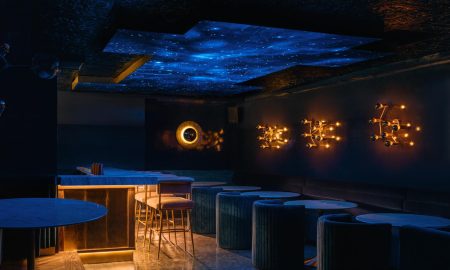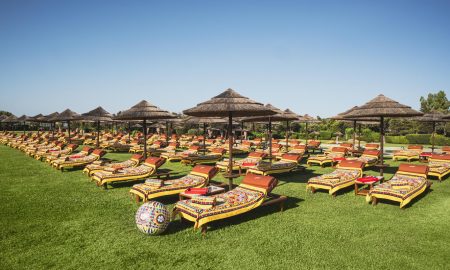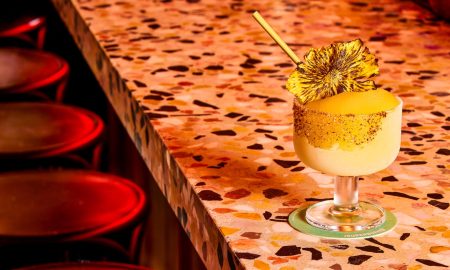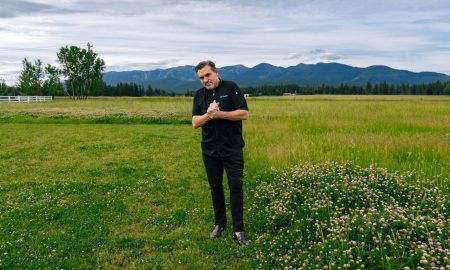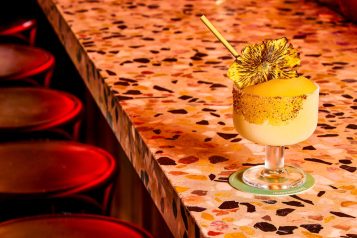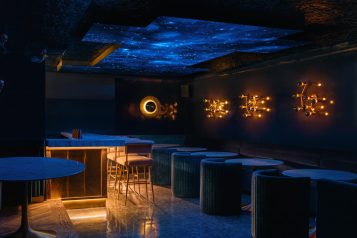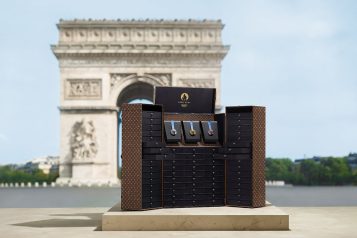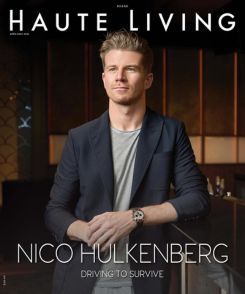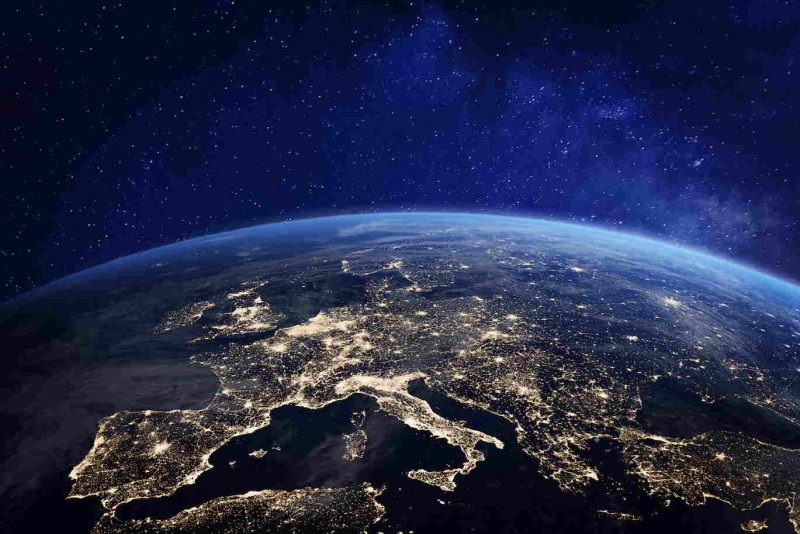 Photo Credit: Nico El Nino/Shutterstock.com
Photo Credit: Nico El Nino/Shutterstock.com
FROM SPACE SIMULATIONS TO STARGAZING EXPEDITIONS, ASTROTOURISM IS HITTING A FEVER PITCH. HERE ARE THE BEST EXPERIENCES TO INFINITY AND BEYOND.
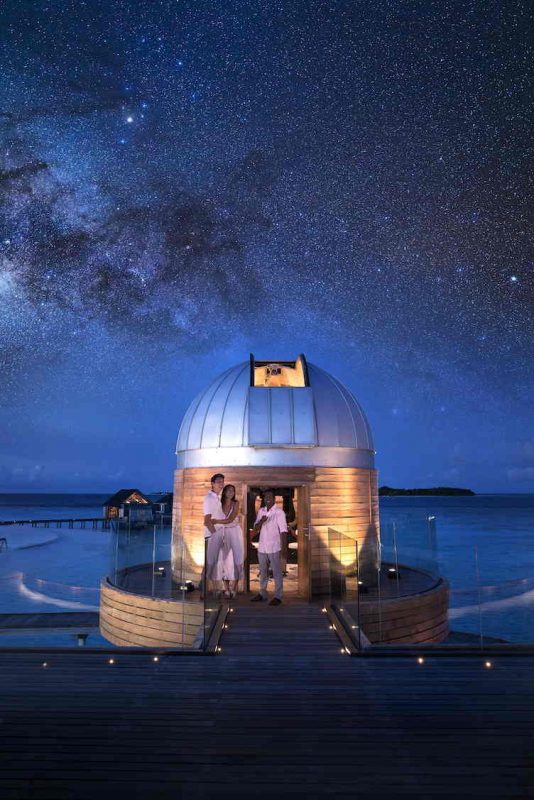 Photo Credit: Anantara Kihavah Maldives Villas
Photo Credit: Anantara Kihavah Maldives Villas
Per aspera ad astra means “through adversity to the stars.” And when it comes to space travel, yes, it’s been a struggle. But no more. The Orbital Assembly Corporation (OAC) will open the first commercial space station operating with artificial gravity by 2025, while Space Perspective will become the first space launch operator to launch from the Space Coast Spaceport, located adjacent to NASA’s Kennedy Space Center, and will offer a luxurious six-hour trip inside Spaceship Neptune — 100,000 feet into space, to the tune of $125,000 — when it launches in late 2024. And now that Sir Richard Branson and Amazon titan Jeff Bezos have headed into orbit, with Tesla and SpaceX founder Elon Musk soon to follow, astrotourism is travel’s latest buzzword. While we mere mortals may not make it to outer space as quickly as the world’s wealthiest, those who have the funds can stay at some five-star hotels with stargazing experiences and even play at space travel with Orbite’s new astronaut orientation training in France. Here, we deep dive into the cosmos to unearth some of the best experiences for those who can’t head to the stars themselves…yet.
ORBITE
 Photo Credit: MAGALI MARICOT
Photo Credit: MAGALI MARICOT
Experiential travel has been an upward trend for many years, and there’s no experience more unique than astronaut training. Civilians with deep pockets can pay to play at going to space with a new program from Orbite, a company founded by French hospitality giant and video game creator Nicolas Gaume as well as Jason Andrews, a major player in the aerospace start-up world. Guests indulge in a series of activities that not only simulate going into the galaxy but also prepare them for it, led by director of spaceflight training Brienna Rommes (who actually prepared Sir Branson, among others, for his own orbital journey) while staying and playing in a luxurious way. Below is a sampling of what Orbite, which will be constantly evolving and changing until its super-secret dedicated space complex opens in the U.S. in 2024, offered during its inaugural voyage. Altogether, the four-night three-day training is truly out of this world and sets the bar high for future civilian space-preparation experiences.
STAY
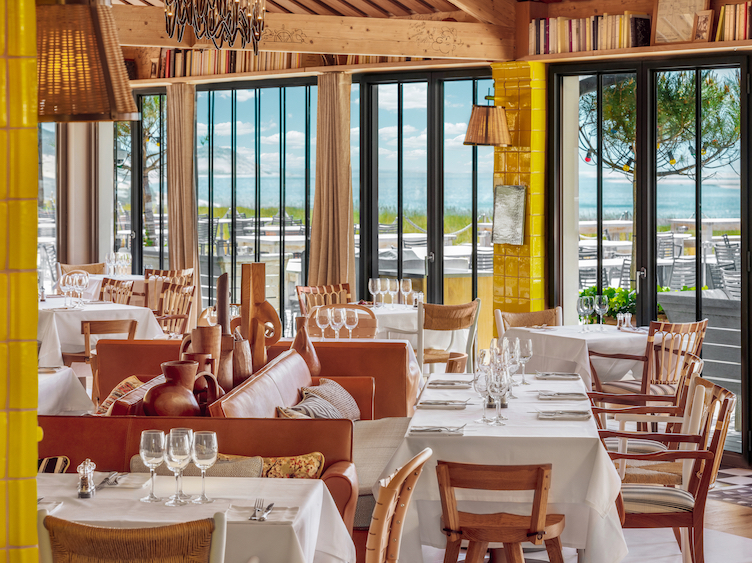 Photo Credit: LA CO(O)RNICHE
Photo Credit: LA CO(O)RNICHE
LA CO(O)RNICHE
La Co(o)rniche is magical. Located on the French coast of the Pilat-Plage area, overlooking the Bassin d’Arcachon and leaning against the highest dune in Europe with views of Cap Ferret just three miles away from Bordeaux, there’s definitely a French Riviera vibe here, though with a laid-back, elite sensibility that’s completely its own. As redesigned in all white by icon Philippe Starck, the rooms offer up modern seaside glamour and still manage to pay homage to the oyster farming the area is known for. Its history as a former 1930s hunting lodge — a neo-Basque house sheltering under the pine trees — is a beautiful reminder that the past and present can merge seamlessly.
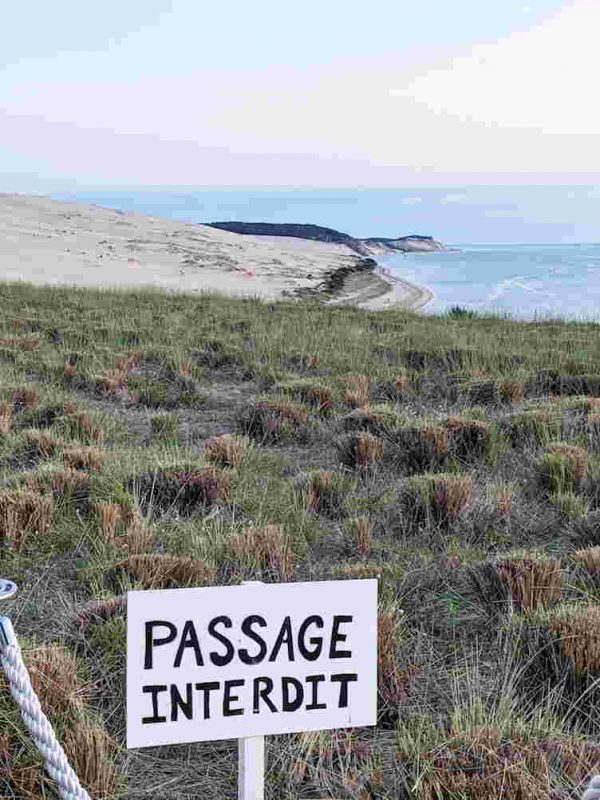 Photo Credit: MAGALI MARICOT
Photo Credit: MAGALI MARICOT
PLAY
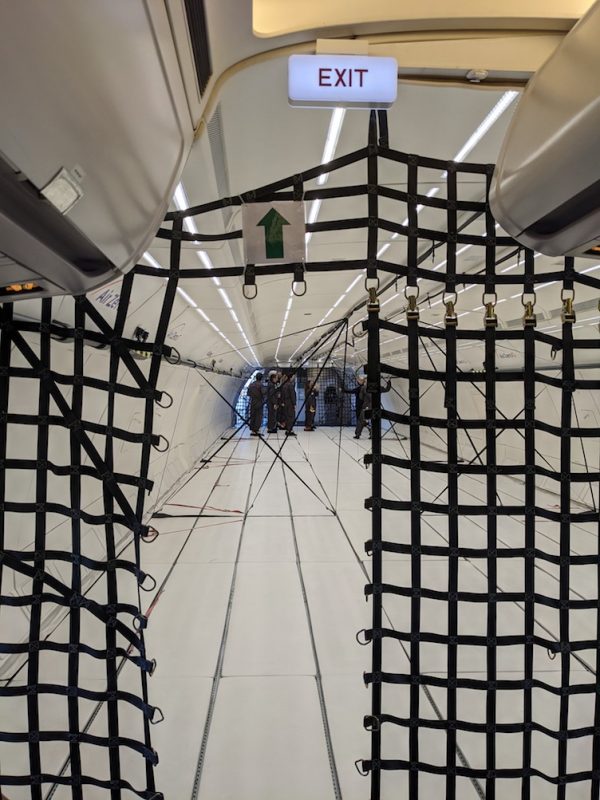 Photo Credit: MAGALI MARICOT
Photo Credit: MAGALI MARICOT
The crux of the Orbite experience is space training itself. The team prepares you for the galaxy beyond in the best of ways, with immersive lectures and seminars led by a team of VIP experts (for privacy purposes, we must keep their names secret, but let’s just say they’re exceptional and elite members of the space community), combined with a VR experience to showcase the different types of aircrafts available to astronauts and civilians so you can follow in the footsteps of Branson, Bezos and company. Then, there is a simulation of what said experiences might be like, thoughtfully designed by a leading space psychologist as well as an Air Zero G experience of astronaut-like weightlessness, followed by a 4G flight to experience the pressures and rigors of skyrocketing into space, which allows guests to test themselves physically and monitor their fear by engaging in a series of aerial tricks —and even fly a plane themselves.
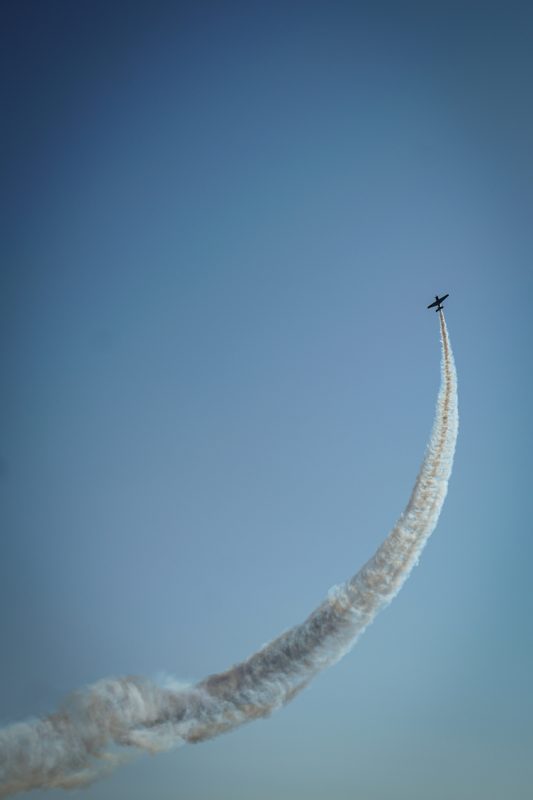 Photo Credit: MAGALI MARICOT
Photo Credit: MAGALI MARICOT
WINE & DINE
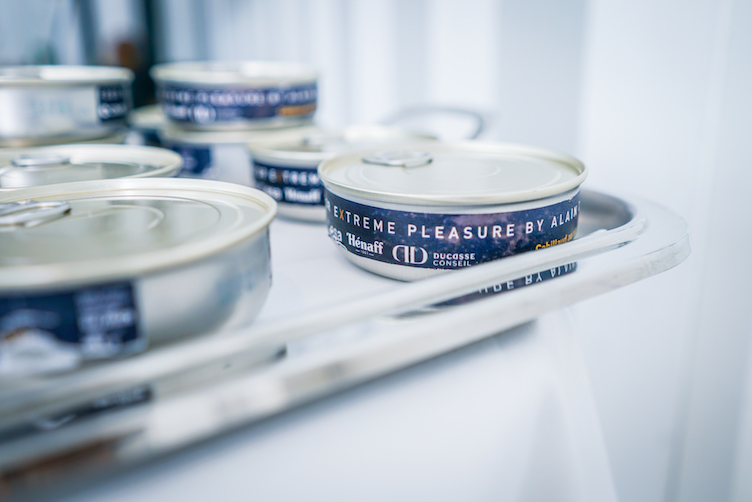 Photo Credit: MAGALI MARICOT
Photo Credit: MAGALI MARICOT
Dinner reservations at La Co(o)rniche are hard to come by, as much for the spectacular sunset view as its lengthy cocktail and wine list and seafood-heavy menu, but the pièce de résistance of Orbite’s culinary offerings is an afternoon catered by the Ducasse Counseil. With this partnership between three-Michelin-starred chef Alain Ducasse and the National Center for Space Studies and the European Space Agency, “special event” meals are prepared for astronauts only; civilians have not, thus far, been allowed to see, never mind taste, the fare fitted into these doppelganger caviar tins. However, during a Michelin-starred food lab, Ducasse’s team offered a sneak peek into gourmet space food, offering a side-by-side comparison of the same freshly prepared and prepackaged meal, which here included blue lobster with organic quinori; buckwheat with tandoori, radishes and bell onions; and cod with piquillos and black rice from Camargue. Post-presentation, guests were treated to two of five existing magnums of G.H. Mumm cuvee 1969, the same year (non-coincidentally) as the moon landing.
 Photo Credit: MAGALI MARICOT
Photo Credit: MAGALI MARICOT
For those who can’t make it to space, star-gazing is still an exceptional treat. Here are the hotels offering some of the best packages in the world to the stars and beyond!
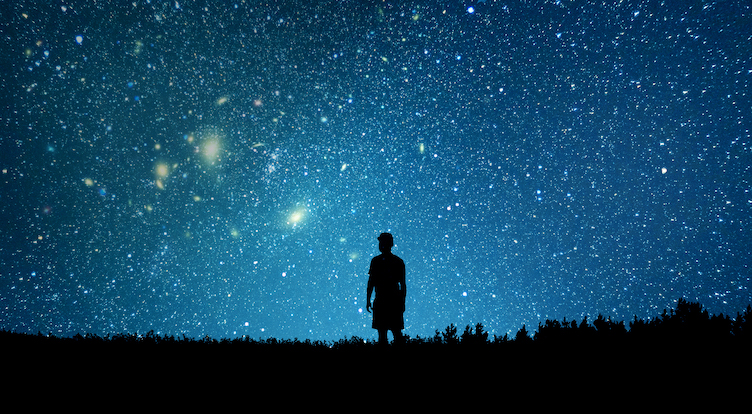 Photo Credit: By Rovsky/Shutterstock.com
Photo Credit: By Rovsky/Shutterstock.com
SONEVA JANI
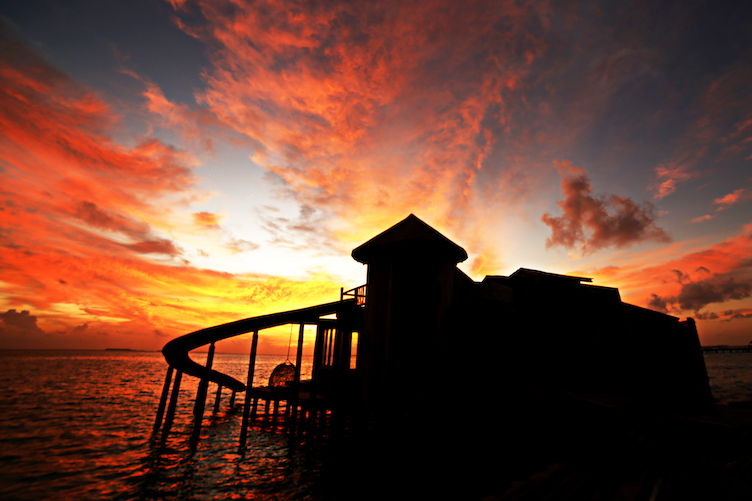 Photo Credit: Soneva Jani
Photo Credit: Soneva Jani
Barefoot luxury has never been better embodied than by the Soneva brand, which prides itself on offering just that at its plethora of properties in the Maldives and Thailand. At Soneva Jani, in the Noonu Atoll of the Maldives (which, like the rest of the company’s gorgeous luxury retreats, is 100 percent carbon-neutral), every indulgence is met, such as a stay in an overwater bungalow with a personal water slide, catching a classic flick on a big screen in the ocean, sunset dolphin cruises, and now the So Starstruck astronomy dinner. At the state-of-the-art, Bond-inspired overwater observatory, guests can sit back and enjoy great food and drinks while the in-house astronomer takes them on a journey through the night sky (using a 16-inch telescope that rises from the floor of the starlight platform overlooking the Indian Ocean). The entire experience — which includes a four-course meal with wine pairings — lasts for three absolutely magical hours.
CONRAD BORA BORA NUI
 Photo Credit: John Kincaid/Conrad Bora Bora Nui
Photo Credit: John Kincaid/Conrad Bora Bora Nui
Beautiful Bora Bora, a dreamy destination in French Polynesia known for its white sand beaches, sparkling turquoise waters and relaxed island ambiance, is one of the world’s most lauded honeymoon hot spots. Any love affair written in the stars should be celebrated with a romantic stargazing experience at Conrad Bora Bora Nui, and here, it’s incredible. From your pool deck villa on the private island of Motu To’opua (which also has a second private inlet just for hotel guests), spend a few hours gazing up at the stars through the lens of the resort’s powerful Sky Watcher Classic 200P telescope, all while enjoying a bottle of Billecart Salmon champagne and some personalized sweet treats. Then spend the next day snorkeling, kayaking, paddle boarding, opening coconuts, braiding coco leaves, playing the ukulele or learning Tahitian. Or just sleep in and enjoy that romantic South Pacific vibe.
LEOBO PRIVATE RESERVE
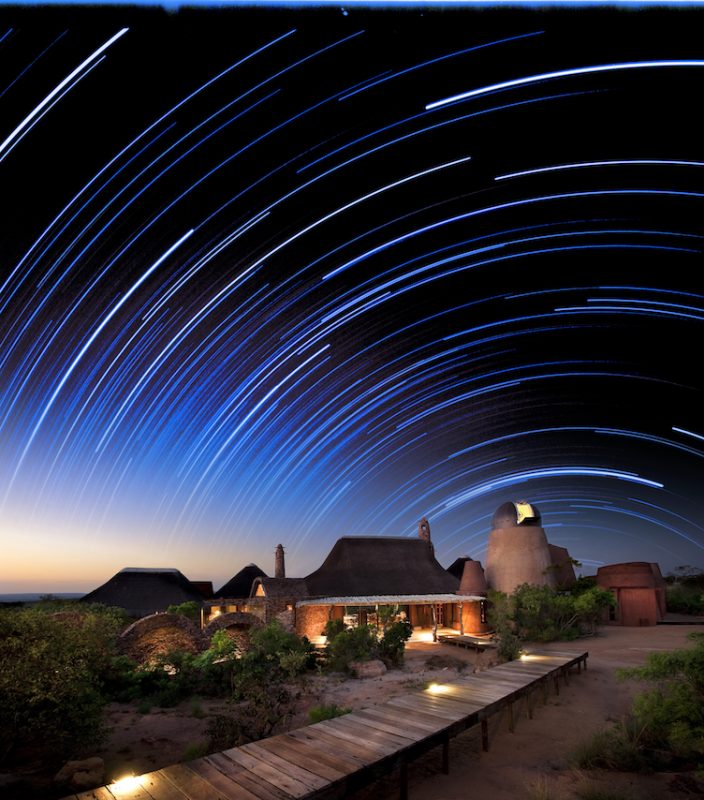 Photo Credit: Dook/Leobo Private Reserve
Photo Credit: Dook/Leobo Private Reserve
South Africa’s Leobo Private Reserve, overlooking the Palala Valley, isn’t just one of the best places to go on safari — it’s also one of the best for stargazing. The Waterberg Observatory’s fully automated copper-colored dome houses two different types of telescopes: a 20-inch corrected Dahl Kirkham for star, planet and nebulae-gazing, and an eight-inch Hydrogen Alpha for looking directly into the sun. Because of Leobo’s remote location, there is virtually no light pollution, so it’s possible to see objects down to magnitude 7.4 (the limit of the human eye is normally magnitude 6). As designed by award-winning architects Silvio Rech and Lesley Carstens, the Observatory is a masterpiece. The state-of-the-art house is the ultimate luxurious stay for the starry-eyed, thanks to a heated infinity pool, rooftop jacuzzi, double-storied library and massage beds. There are unique touches here as well, such as a steel-engineered roof that supports a covered veranda, a wildebeest-hide ceiling and an immense hippo-skeleton chandelier that hovers over the sandstone dining table. The Observatory is also serviced by a butler, maid and chef, who is personally flown in to create epicurean cuisine tailored to each guest’s preference. Additionally, those who book this retreat are offered thermal imaging equipment for nighttime game viewing, four quad bikes, two 700cc racing quad bikes and an electric camouflage golf buggy, as well as activities such as a starlight safari with a local astronomer, target shooting with sniper rifles, bass fishing and use of the estate’s private chopper.
LITTLE KULALA
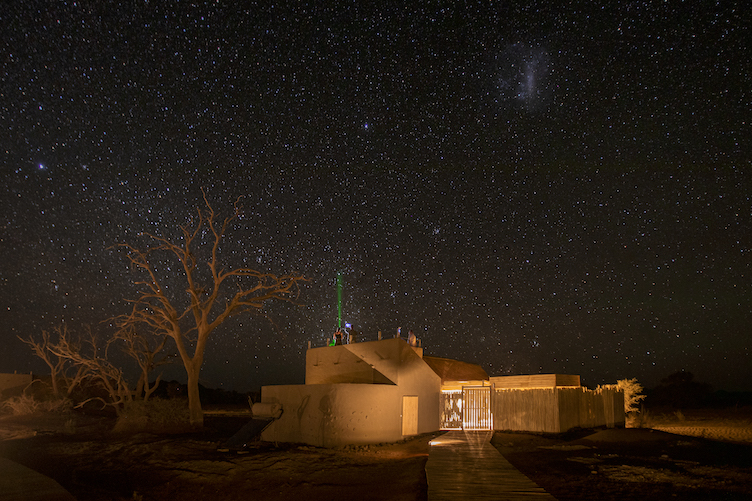 Photo Credit: TCunniffe/Little Kulala
Photo Credit: TCunniffe/Little Kulala
On 27,000 acres of pristine desert landscape in the heart of Namibia’s Sossusvlei Desert lies Little Kulala, a certified Dark Sky Reserve. With 11 suites, each with its own sleep-out deck and star bed, this resort offers truly unparalleled stargazing. The Namib is known for its clear night skies, and with no light pollution, Little Kulala is the ideal spot from which to see the Milky Way stretching overhead, alongside Magellanic Cloud bursts and thousands of groupings of stars seen in few other places. Wilderness Safaris guides lead nighttime sky explorations so guests get a deeper understanding of the constellations and planets they’re seeing. It’s a special spot, to be sure, and one that includes daytime adventures such as hot-air ballooning excursions over the vast desert landscape (ending with an Out of Africa champagne breakfast), game drives through the Namib and an Olympus photo hub experience, where guests can use full sets of Olympus camera equipment to work on their landscape and wildlife photography skills.
MONTAGE HEALDSBURG
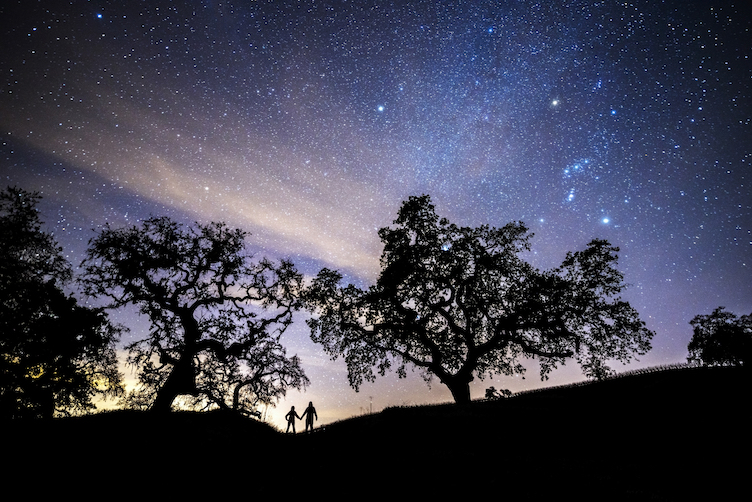 Photo Credit: Rachid Dahnoun
Photo Credit: Rachid Dahnoun
Montage Healdsburg, a new addition to California’s wine country, is maximizing its potential by unveiling an exceptional new astrotourism experience. The $95,000 Sky’s the Limit package includes two nights in the resort’s three-bedroom Guest House, a 4,600-square-foot hideaway with sprawling views of Mount St. Helena and the Alexander Valley, as well as a private dinner for up to six people. Then guests head to nearby Santa Rosa to take a private tour of the Robert Ferguson Observatory, the largest observatory in the western United States (with several telescopes to prove it, including a 40-inch reflector telescope and a two-meter-long refractor telescope with an eight-inch front lens), located in Sugarloaf Ridge State Park. Last, guests receive a personalized two-hour photography session with acclaimed astrophotographer Rachid Dahnoun — who has has earned a spot on the Nikon 100 List — to create a night sky image to take home.
ANANTARA KIHAVAH MALDIVES
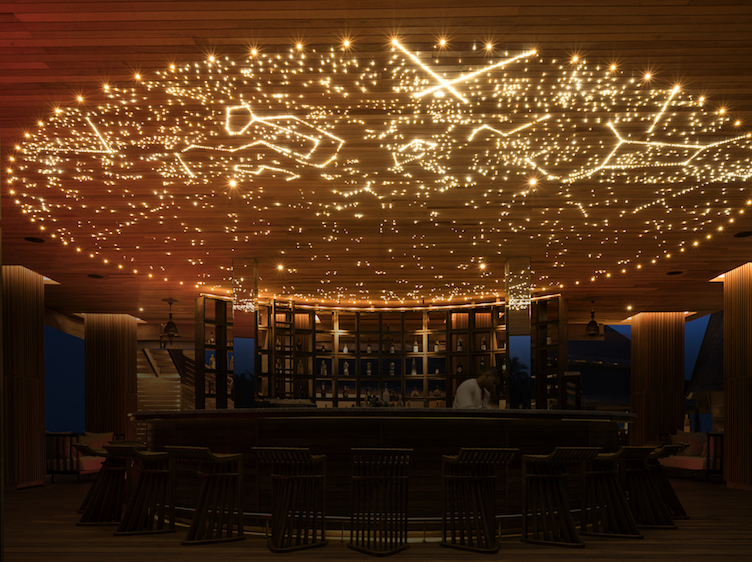 Photo Credit: Ananatara Kihavah Maldiives
Photo Credit: Ananatara Kihavah Maldiives
Time spent at Anantara Kihavah Maldives includes great adventure and discovery — swimming with manta rays, underwater dining, a private cinema under the stars — and now the night sky, too. The aptly named SKY houses the Maldives’ only overwater observatory, combined with a unique luxury cocktail bar with ocean views from every angle, a resident storytelling “Sky Guru” and, most important, the most powerful telescope in the region: a research-grade 16-inch Meade LX200, mounted on a giant field tripod. Sip on a glass of champagne or a custom island-inspired cocktail while resident astronomer Ali Shameem (a student of astronomy greats such as Giovanni Benjamin of the University of Padua’s department of physics and astronomy, and astronaut Buzz Aldrin) points out the pale yellow rings of Saturn or the counter-rotating zones and belts of Jupiter that vary in width, color and intensity from year to year, or — his favorite sight — the Omega Centauri, a globular cluster in the Milky Way. The Maldives’ location just above the equator means the stars of both hemispheres are visible from Anantara Kihavah. When coupled with minimal light pollution and open skies, this place is, well, out of this world.











